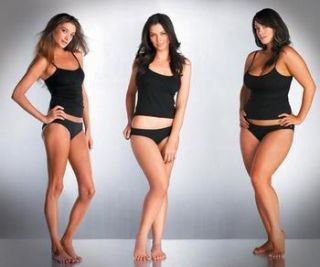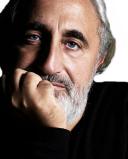Stress
Men Like Heavier Women…Especially When Stressed Out!
The Sir Mix-a-Lot effect (big butts and stress)
Posted September 12, 2012

In a previous post, I discussed universal metrics of beauty (see here). Often, academics and lay people alike wrongly assume that to argue that a phenomenon is rooted in an evolutionary reality implies that it is not malleable. As I have written here in my rebuttal to a Newsweek article by Sharon Begley in which she critiqued evolutionary psychology, we are an inextricable mix of our biology and our environment. All evolutionary behavioral scientists recognize the import of the environment in shaping who we are. Let’s take men’s evolved preferences for the hourglass figure, which corresponds to a waist-to-hip ratio of 0.70 (see here for my earlier post on the topic), a preference shared by otherwise congenitally blind men (see my post here for details). This near-universal penchant of 0.70 can be fine-tuned as a function of local conditions (e.g., environments of habitual caloric scarcity yield a preference for more rotund women).
In a recent article published in PLoS One and authored by Viren Swami and Martin J. Tovée, men’s shifting preferences for varying female body shapes is further explored. Specifically, using the Environmental Security Hypothesis as the theoretical framework, the authors argued that when men are placed under psychological stress, they would alter their preferences for female figures toward the heavier end of the spectrum. The latter hypothesis posits that when facing threatening environments (e.g., caloric scarcity), individuals prefer morphological cues that signal physical maturity.
The authors recruited 81 men to participate in the study (n = 41 for the experimental group; n = 40 for the control group). The former group was put through the Trier Social Stress Test, a procedure that has been shown to augment psychological stress (via an increase in cortisol levels). Twenty minutes following the stress test, participants were shown photos of ten women of varying body mass index types (very thin to very heavy) and asked to rate their attractiveness on a 1-9 attractiveness scale. They were also asked to identify which of the ten photos was the most attractive to them, and the largest and thinnest body types represented in the ten photos that they still considered to be attractive. Covariates were collected including the participants’ hunger state (as this has been found to affect body size preferences), age, and the body mass index scores of participants. The covariates did not yield statistically significant effects but the experimental condition did (stress or no stress).
Here are the key results:
(1) There were no statistically significant differences between the stress and no stress groups in their ratings of very thin figures, as well as for the ratings of the heaviest body type.
(2) Stressed participants offered higher attractiveness ratings for normal weight body types, overweight body types, and one obese body type. In other words, on average, stressed individuals rated normal and heavier set women more positively.
(3) Stressed participants rated a heavier body type as the most attractive, and they rated a larger body type as the heaviest one that they would still find attractive. No differences were found between the two groups for the thinnest body type that would still be considered attractive.
Bottom line: Men who are under psychological stress are more likely to judge heavier women as attractive. Thus, while morphological preferences are indeed rooted in evolutionary-based realities, this does not imply that situational forces are not operative in altering such penchants. This serves as yet another blow to critics of evolutionary psychology who repeatedly levy the canard of biological determinism against the field.
It is perhaps time to add to the infamous words of Sir Mix-a-Lot: “I like big butts”…especially when stressed out!
This constitutes my 200th Psychology Today post. I have written 125,000+ words on this blog, which amounts to roughly the size of a long trade book! Since starting my PT blogging career in November 2008, Homo Consumericus has garnered 1,738,000+ readers. Thank you for your readership. Notwithstanding some occasional nastiness originating from “overzealous” readers, this has largely been a very rewarding experience. I thank the PT editors for providing me with such a wonderful forum to share ideas with the public at large.
Source for Image:


